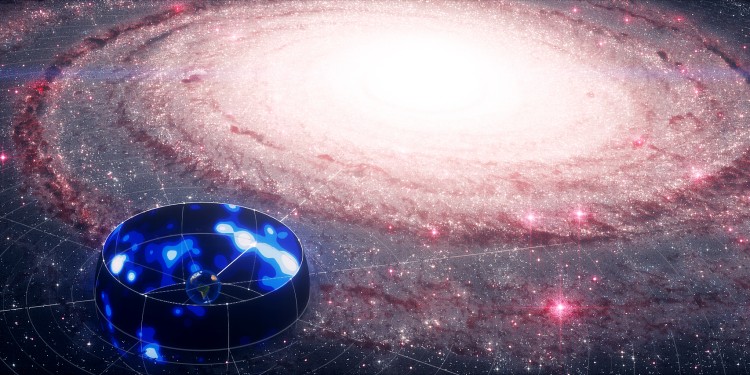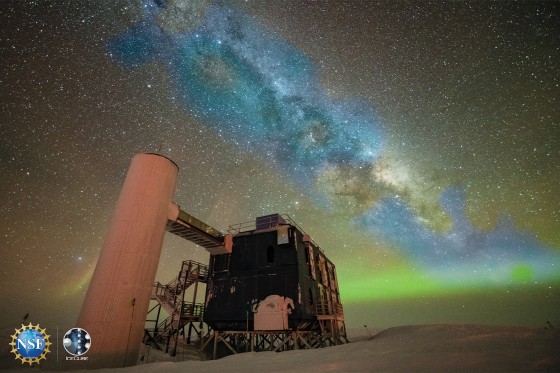
“IceCube” Observatory provides evidence of neutrinos in the Milky Way for the first time
Our Milky Way is a galaxy consisting of billions of stars and can be seen in the night sky with the naked eye. The IceCube Neutrino Observatory, located in the ice of the Antarctic, has now for the first time produced an image of the Milky Way – with the aid of neutrinos. This means that the IceCube team – an international group of more than 350 researchers – has provided evidence of the emission of high-energy neutrinos from the Milky Way. Neutrinos are elementary particles, having almost no mass, which only interact very rarely with matter. It is therefore extremely difficult to measure them, and they still present experts with a lot of puzzles. The latest IceCube study has been published in the “Science” journal.
“Observing our galaxy in neutrinos instead of in light represents a big step forward,” says Prof. Alexander Kappes from the Institute of Nuclear Physics at the University of Münster. “Neutrinos are produced automatically, together with gamma radiation, in the interaction between cosmic radiation and galactic gas and dust,” he explains. “The results confirm our assumptions regarding cosmic radiation in our galaxy. The next step will be to identify the sources.” Alexander Kappes’ team is involved in analysing data in the IceCube project, as well as in developing improved optical sensors for future enhancements to the detector; these enhancements will play an important role in determining the origin of the neutrinos. The team will also be carrying out studies to evaluate the performance of the sensors.

The IceCube Neutrino Observatory contains more than 5,000 individual optical sensors at a depth of between 1.5 and 2.5 kilometres below the surface of the Antarctic, near the South Pole. These sensors measure the tiny flashes of light which occasionally occur when neutrinos cross the ice. The detector was completed in 2011 after a construction time of five years and it has been recording data uninterruptedly since then.
Original publication
IceCube Collaboration (2023): Observation of high-energy neutrinos from the Galactic plane. Science Vol 380, Issue 6652, pp. 1338-1343; DOI: 10.1126/science.adc9818
